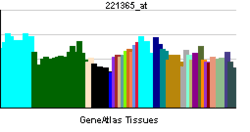Motilin receptor
Motilin receptor is a G protein-coupled receptor that binds motilin.[3][4] Motilin in turn is an intestinal peptide that stimulates contraction of gut smooth muscle.
References
Further reading
- Smith RG, Leonard R, Bailey AR, et al. (2001). "Growth hormone secretagogue receptor family members and ligands.". Endocrine. 14 (1): 9–14. doi:10.1385/ENDO:14:1:009. PMID 11322507.
- McKee KK, Tan CP, Palyha OC, et al. (1998). "Cloning and characterization of two human G protein-coupled receptor genes (GPR38 and GPR39) related to the growth hormone secretagogue and neurotensin receptors.". Genomics. 46 (3): 426–34. doi:10.1006/geno.1997.5069. PMID 9441746.
- Feighner SD, Tan CP, McKee KK, et al. (1999). "Receptor for motilin identified in the human gastrointestinal system.". Science. 284 (5423): 2184–8. doi:10.1126/science.284.5423.2184. PMID 10381885.
- Miller P, Roy A, St-Pierre S, et al. (2000). "Motilin receptors in the human antrum.". Am. J. Physiol. Gastrointest. Liver Physiol. 278 (1): G18–23. PMID 10644557.
- Thielemans L, Depoortere I, Van Assche G, et al. (2001). "Demonstration of a functional motilin receptor in TE671 cells from human cerebellum.". Brain Res. 895 (1–2): 119–28. doi:10.1016/S0006-8993(01)02055-8. PMID 11259768.
- Coulie B, Matsuura B, Dong M, et al. (2001). "Identification of peptide ligand-binding domains within the human motilin receptor using photoaffinity labeling". J. Biol. Chem. 276 (38): 35518–22. doi:10.1074/jbc.M104489200. PMID 11461914.
- Thielemans L, Depoortere I, Vanden Broeck J, Peeters TL (2002). "The motilin pharmacophore in CHO cells expressing the human motilin receptor". Biochem. Biophys. Res. Commun. 293 (4): 1223–7. doi:10.1016/S0006-291X(02)00356-X. PMID 12054506.
- Depoortere I, Thijs T, Thielemans L, et al. (2003). "Interaction of the growth hormone-releasing peptides ghrelin and growth hormone-releasing peptide-6 with the motilin receptor in the rabbit gastric antrum". J. Pharmacol. Exp. Ther. 305 (2): 660–7. doi:10.1124/jpet.102.047563. PMID 12606621.
- Dunham A, Matthews LH, Burton J, et al. (2004). "The DNA sequence and analysis of human chromosome 13". Nature. 428 (6982): 522–8. doi:10.1038/nature02379. PMC 2665288
 . PMID 15057823.
. PMID 15057823.
- Matsuura B, Dong M, Naik S, et al. (2006). "Differential contributions of motilin receptor extracellular domains for peptide and non-peptidyl agonist binding and activity". J. Biol. Chem. 281 (18): 12390–6. doi:10.1074/jbc.M511921200. PMID 16531413.
External links

 . PMID 15057823.
. PMID 15057823.